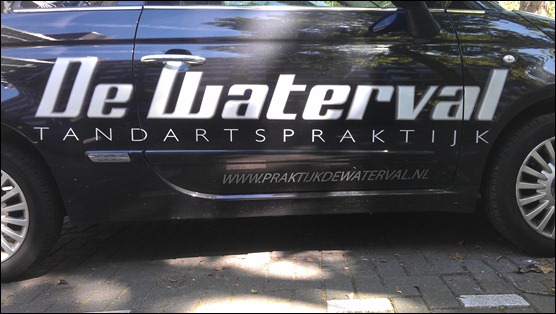Believe it or not, but I have a confession to make. I’m currently in a pure waterfall project. It’s my first in many, many years and despite the fact that I love the technology, I don’t like our way or working it a bit.
During the first phase of this project we are trying to deliver twenty functional work items. All of these twenty work items are analyzed first, then reviewed. After all review comments have been processed, all work items are designed. And again reviewed. After all review comments have been processed again, the developers start constructing them. And once they finish the testers have a go at the software produced.
Yes, I know this is efficient nor effective. And yes, the testers find lots of defects that could have easily been prevented using an iterative approach where we jointly work on a single work item, and only after it’s finished move on to the next. But we just don’t. And the delivery date is nearing. As a result, at the delivery date we will likely deliver twenty half-baked work items, instead of delivering maybe ten or twelve complete work items. It’s a choice.
End of discussion
You could say that the discussions about the chosen approach I have with the project manager are vivid. At the very least. “No, we’re not going to do agile,” he clearly states. “I don’t care if we call it agile or not,” I respond, “But the way we are working now is simply inefficient.” Personally I really don’t care if projects are tagged as agile, Scrum, Smart, RUP or even waterfall. I just dislike inefficient processes. “This approach is easy to explain to the client,” the project manager continues, “So we are going to stick to it. End of discussion.”
And then coming out of my girlfriends’ apartment building this morning I saw this car in the parking lot. It occurred to me immediately. We are waterfall dentists.
Imaging you’re a young dentist, fresh out of dentistry school, and you are starting a new practice. Why on earth you would name it The Waterfall I don’t know, but twenty new patients are hurdling up to be treated. Being The waterfall dentist you use an appropriate approach. During the first week you examine all twenty patients. During the second week you commence to the first part of their treatment: drilling holes. Then in the third week, all twenty patients come back and have the holes filled. In the fourth week all patients return again for a last check-up. Just testing if all holes are filled properly. Finally, in the fifth week you get to send twenty bills to twenty happy patients. Project done. Next project.
Good bookkeeping and new patients
Doesn’t that sound good? This approach resembles my current project in great detail. So why is it, although this model is easy to explain to patients, no dentist in the world would even slightly consider to apply it? Well, first of all, your patients don’t like to walk around with unfilled holes in their mouths for a least a week. Second, your patients will have to come in to your office four times, and you will have to do pretty good bookkeeping to remember each patients details when they return. If you would have filled a patients tooth right after you’ve drilled a hole, this need for documentation and good memory wouldn’t have been necessary. Moreover, what if a new patient comes in during the second or third week with a terrible toothache? You would have to decline him saying: “Sorry, I don’t take additional work now,” advising the new patient to come back after all current patients are serviced. It’s the vicious change request. And what if you become ill during? Your whole schedule will certainly slide. As a result, none of the patients will have been fully serviced at the end of the scheduled period, leaving them in uncertainty about when you will deliver. Basically, you will loose your patients as fast as they hurdled up. And you won’t be able to send any bills.
I could probably spent another two posts in explaining why the waterfall model isn’t applied by dentist anywhere in the world. But I won’t.
We just might
Dear project managers, despite the fact that the waterfall model is so easy to explain to clients, that doesn’t make it any more effective or efficient. Armed with The Waterfall Dentist Anti-Pattern, you can explain iterative, or agile, approaches to your clients just as easy. In fact you can even service your clients better, as they may send in new urgent patients during the project, and you will be able to service those patients early. And even though you may turn ill during the project, servicing the patients one by one, rather than in a returning batch, you can actually fully service a large number of them within the designated timebox, instead of having serviced all of them half when the deadline approaches. I would much rather be able to send bills to fifteen out of twenty patients, then not being able to bill at all.
So where’s my current project standing? Well, just like The waterfall dentist might actually serve twenty patients during the current phase, we might actually deliver all twenty work items. But I wouldn’t bet my gold teeth on it.

One thought on “The Waterfall Dentist Anti-Pattern”
Comments are closed.